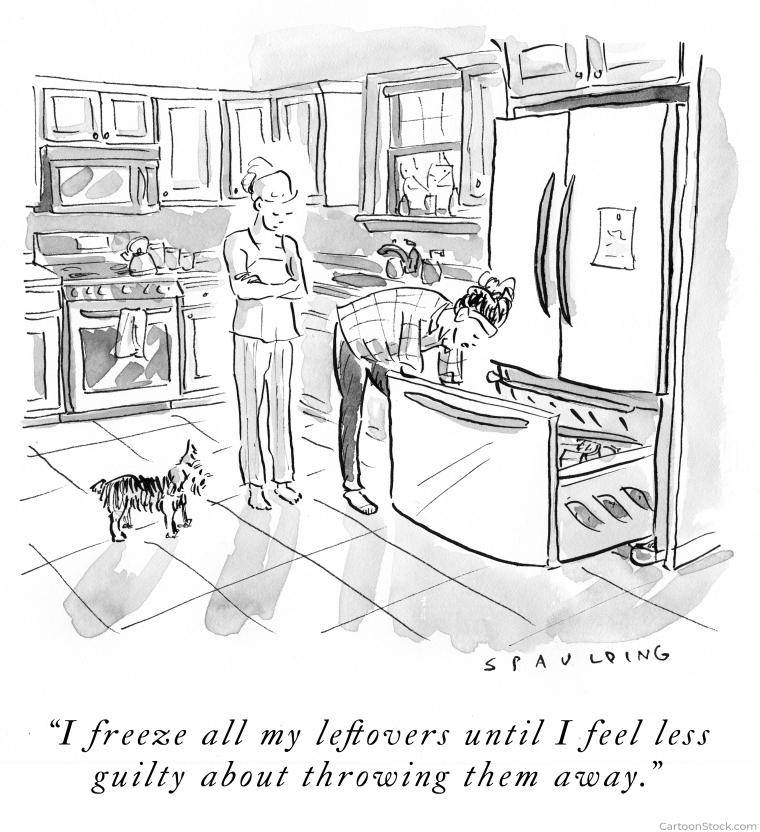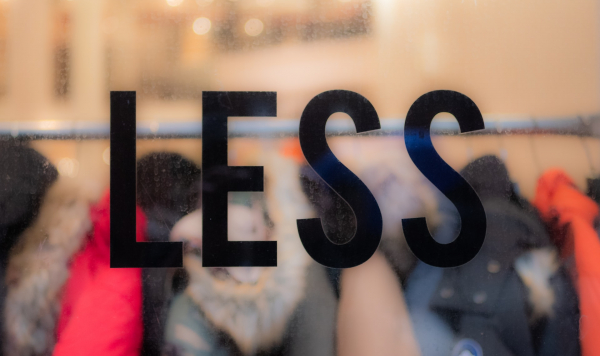Have you ever found yourself making a New Year’s resolution, only to find yourself back in your old ways by the end of winter? Maybe it was a gym plan, a new budget or sober streak that you just couldn’t quite make stick?
We’ve all been there, and it’s the same when it comes to adopting more sustainable behaviours. For example, we at North London Waste Authority (NLWA) know how much north Londoners care about waste and climate change, but this doesn’t always lead to them taking action and adopting sustainable behaviours. Why is it so difficult for us to break old habits and take up the new, even when we know it’ll benefit the environment and future generations?
Behaviour change is complex but it’s something that keeps researchers busy and has resulted in numerous theories being developed to help understand why we do or don’t engage in a particular behaviour.
Here at NLWA we’ve been thinking a lot about how to apply behavioural theories to the work we deliver. Our aim is to encourage and enable residents in north London to make sustainable choices that will result in less waste, help mitigate climate change and biodiversity loss and potentially save money. We have committed to help residents make these choices, through our Waste Prevention Plan, and are working on developing projects with the aim to reduce consumption and increase reuse and repair behaviour.
One behaviour change framework that is helpful at guiding effective strategy is the behaviour change wheel. A framework that incorporates 19 different tried and tested methodologies to change behaviour. The framework starts with a process to understand the behaviour through the COM-B model. The model suggests that capability, opportunity, and motivation are all required for a person to engage in a specific behaviour. The COM-B helps to uncover what people’s physical and psychological capabilities are, the physical and social opportunities that are presented by the environment and their intentions and existing habits in relation to the behaviour in question. Once the barriers and motivators have been identified and categorised into the COM-B components, the behaviour change wheel then helps to identify the most effective intervention strategies and behaviour change techniques to apply to move people along their journey to reduce their waste.
Don’t be scared by the science!
To understand the behaviour change wheel further and to see how it could be applied to develop projects that encourage residents to reduce waste, reuse and repair, NLWA staff have undergone training with Aim For Behaviour. We have been applying our learning to develop new behaviour change projects to increase recycling, the use of reusable packaging and refilling, the purchase and use of reusable period products, and reduce food waste behaviour.

So how do you use the COM-B model and behaviour change wheel? Let’s take the example of someone throwing away their leftovers, like in the picture. They feel guilty about throwing away the food, so they freeze it instead, forget about it for now and later throw it away. Chucking out small amounts of leftovers might not seem like a massive problem, but when we know that London wastes 1.4 million tonnes of food each year, 64% of which is generated by households, it all adds up! Let’s think about this from a behaviour change point of view, and work out what steps we could take to understand this behaviour and move the person to use their leftovers rather than throwing them in the bin.
Step 1: What behaviour are we trying to change? First we need to identify the behaviour that needs to change and by whom. In this example it could be a north London resident using up or eating their leftovers, sooner rather than later.
Step 2: What do we already know about the barriers and motivators in relation to this behaviour? A good start would be to have a look at research that already exists through a web search and reports from organisations working in the sector.
Step 3: Use the COM-B model to understand the barriers and motivators of the behaviour. We might need to fill in gaps in the research with our own insights work to understand residents’ capability, opportunity, and motivation.
We know people don’t like food waste because they feel bad for wasting food that someone else, especially someone less fortunate, could have eaten. Additionally, many of us were brought up thinking that food waste is inherently bad – that binning food is like throwing money down the drain and it is bad for the environment. As a result, people are generally motivated to change their food waste behaviour, so we are off to a promising start.
Perhaps the reason the leftovers aren’t eaten is because they are unappealing, and it’s dull eating the same meal twice or even three times. Residents might not know how or have the cooking skills to turn leftovers into more inspiring meals. This barrier relates to someone’s capability. A second barrier might be that people simply forget to use up their leftovers and then repeat their existing habit of throwing leftovers and food scraps in the bin. This corresponds to their automatic motivation.
Step 4: Once we have worked out what psychological components of the COM-B need to be targeted, we can then follow the behaviour change wheel process to identify the intervention functions that target those components and which behaviour change techniques to use. In this example, for a person to execute the behaviour we would need to change their physical and psychological capability as well as their automatic motivation. We could do so by offering cooking classes that provide residents with the skills they need to cook different and delicious meals from their leftovers and provide them with the knowledge they need to use up food scraps (such as potato peelings or broccoli stalks) that would otherwise be binned. Using a prompt could help people to remember to eat their leftovers sooner rather than later and break existing food waste habits. There are 93 different behaviour change techniques we can explore and apply to target each of the COM-B components.
Who is the target audience?
Ok, so we have a framework that we can use to help us examine a given behaviour, but who is it that we want to target with our interventions? To help us understand how we could best design our projects, we wanted to understand better who we’re trying to reach. We commissioned Savanta to carry out a piece of research with north London residents to understand their capability, opportunity, and motivations around waste prevention behaviours. The outcome identified four ‘personas’ among north Londoners and the findings showed us that overall, 76% of north Londoners agree waste reduction is important. Of those, 42% rank environmental reasons as their top motivator.
The personas included:
- the New Wave Environmentalists, who are passionate about buying second hand and sourcing reusable alternatives;
- the Waste Crusaders, who are committed to meal planning and recycling to protect the planet for future generations;
- the Curious Revellers, who prioritise cost and convenience; and
- the Thrifty Planners, who care about the longevity of items they are buying.
The segmentation work helps us to increase our impact by prioritising who we are trying to reach with our campaigns and interventions as well as how best to communicate with them.
Curious to see which persona you fit into? Take our quiz to find out!
Surely it can’t all be down to individuals to make change?
Absolutely not! Preventing waste should be everyone’s priority from government and local authorities to industry, manufacturers and innovators; change needs to happen at every system level. From the policies that allow unnecessary packaging to come on the market, to the new electricals that stop working after a year, to the food thrown away across the whole food supply chain, change is required everywhere.
A systems approach helps to understand how the different parts of the system interact to produce the behaviour of the whole. Looking at the problem holistically helps to identify the solutions and opportunities required to create systems change.
We have been busy mapping the relationships between system elements, the behaviours that need changing and the influences of those behaviours, to pinpoint what needs to change and by whom to reduce and prevent waste.
If you are interested to hear more about systems thinking, make sure you come along to our Waste Prevention Exchange, where we will hear a number of expert panellists discuss what it takes to establish a circular economy and why it is important to understand the whole system in which we’re operating.
References
Public Health England. (2019). Achieving behaviour change A guide for local government and partners. https://www.gov.uk/government/publications/behaviour-change-guide-for-l…
Michie, S., van Stralen, M. M., & West, R. (2011). The behaviour change wheel: A new method for characterising and designing behaviour change interventions. Implementation Science, 6(1), 42. https://doi.org/10.1186/1748-5908-6-42
Allison, A. L., Lorencatto, F., Michie, S., & Miodownik, M. (2021). Barriers and enablers to buying biodegradable and compostable plastic packaging. Sustainability (Switzerland), 13(3), 1–15. https://doi.org/10.3390/su13031463
Gainforth, H. L., Sheals, K., Atkins, L., Jackson, R., & Michie, S. (2016). Developing interventions to change recycling behaviors: A case study of applying behavioral science. Applied Environmental Education & Communication, 15(4), 325–339. https://doi.org/10.1080/1533015X.2016.1241166
Allison, A. L., Lorencatto, F., Michie, S., & Miodownik, M. (2022). Barriers and Enablers to Food Waste Recycling: A Mixed Methods Study amongst UK Citizens. International Journal of Environmental Research and Public Health, 19(5), 2729. https://doi.org/10.3390/ijerph19052729



